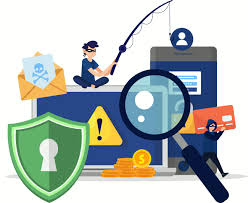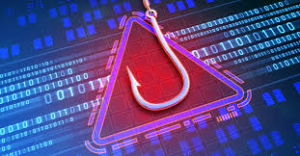In today’s digital landscape, every organisation, regardless of its size or industry, is dependent on business email communication. However, the very attributes that make email so convenient and widely used—its accessibility and familiarity—also render it an appealing target for cybercriminals. These malicious actors often employ deceptive tactics such as look-alike domains and email spoofing to execute their schemes.

At first glance, these techniques may seem innocuous, but they are designed with a specific intent: to mislead unsuspecting victims into believing that an email is from a trustworthy source. The criminal behind these tactics might create an email address that resembles that of a legitimate sender, either by altering a single character or by using a domain that closely mimics the original. This subtle manipulation can be incredibly effective in phishing attacks, where the goal is to deceive individuals into thinking they are interacting with someone they know or trust. As a result, employees or business partners may inadvertently share sensitive information or redirect funds based on this false sense of security.
The threat posed by look-alike domains is pervasive, affecting businesses across all sectors. To combat this risk, organisations must adopt proactive measures aimed at preventing both look-alike domain attacks and email spoofing. By implementing robust policies and controls, companies can fortify their defences against these deceptive practices.
To help you recognise the tactics employed in domain phishing, here are some typical strategies that criminals might use to create look-alike domains. Take a moment to see if you can identify the distinctions between a legitimate domain and its deceptive counterpart:

One common approach involves simply removing or altering a character in the domain name. For example, consider how a minor change like dropping the letter ‘a’ in an address could lead to confusion. Such alterations may go unnoticed by even the most vigilant eye, making it essential for organisations to remain aware of these potential threats.
By understanding the methods employed by cybercriminals and staying informed about best practices for email security, businesses can better protect themselves against the growing menace of phishing attacks and safeguard their sensitive information from falling into the wrong hands.
Recognising the Warning Signs of Domain Phishing

In a digital landscape where trust is paramount, it’s crucial to remain vigilant against the cunning tactics employed by cybercriminals who attempt to deceive unsuspecting users through look-alike domains. These impostors can be remarkably similar to legitimate addresses, leading to confusion and potential security breaches. To help you sharpen your eye for detail, let’s delve into some common strategies that these fraudsters utilise. Can you identify the subtle distinctions?

Methods Employed by Cybercriminals
| Tactic | Authentic Domain | Imitation Domain |
|————————————|———————————|——————————–|
| Omitting a character | @marquettefarm.com | @marquetefarm.com |
| Altering the top-level domain | @marquettefarm.com | @marquettefarm.co |
| Modifying a letter in the domain | @marquettefarm.com | @marguettefarm.com |
| Inserting an extra character | @marquettefarm.com | @marquettefarms.com |
The success of these deceptive domain spoofing attempts often hinges on the recipient’s state of mind—if they’re distracted or in a hurry, they may not notice the slight variations. For instance, it can be deceptively simple to confuse “rn” with “m.” Therefore, safeguarding against email domain spoofing requires a keen sense of awareness and a diligent effort to authenticate the sources of incoming communications.
Strategies to Combat Email Spoofing and Look-Alike Domains
To effectively shield yourself from the threat of domain phishing, a proactive, layered strategy is essential. Protecting your organisation, clientele, and team members can be achieved through an amalgamation of robust internal protocols and comprehensive employee training. Here are some suggested measures:
Take the initiative. Envision the various methods fraudsters might employ to mimic your email domain. By proactively acquiring similar domains before malicious actors can exploit them, you can thwart potential attacks before they occur.
Collaborate with Experts: Engaging with cybersecurity specialists can provide invaluable insights and protective measures explicitly tailored to your needs.

In this ever-evolving digital environment, remaining alert and informed is your best defence against those who seek to undermine trust through deceptive practices. By adopting a vigilant mindset and implementing strategic safeguards, you can help ensure that your communications remain secure and authentic.
In the ever-evolving landscape of cybersecurity, organisations face a myriad of threats, particularly from those who seek to exploit vulnerabilities through deceptive means. One such avenue for protection involves collaborating with specialists in the field—those skilled in identifying counterfeit operations. These professionals, often part of brand protection services, possess the expertise needed to uncover look-alike domains that could mislead unsuspecting users swiftly. Their ability to act decisively against these fraudulent entities can serve as a formidable line of defence for businesses seeking to safeguard their online presence.
Moreover, leveraging technological solutions plays a pivotal role in enhancing security measures within an organisation. Implementing email control tools can significantly mitigate risks associated with external communications. For instance, users can benefit from alerts or visual indicators—such as flags or banners—within their email systems that signal when an incoming message originates from outside the organisation’s trusted network. Another effective option is the utilisation of Domain-based Message Authentication, Reporting, and Conformance (DMARC), a feature that many commercial email providers offer. This tool not only bolsters control over incoming messages but also aids in the detection of potential threats lurking within seemingly innocuous emails.

However, technology alone is not enough; human vigilance is equally vital. Educating employees on the fundamental aspects of recognising phishing attempts, domain spoofing, and other forms of social engineering is essential. Training programs can empower staff to identify suspicious emails and discern look-alike domains that may compromise security. Additionally, conducting phishing simulations can provide valuable insights into employee awareness levels, revealing who might fall victim to deception and who possesses the acumen to flag potential threats.
In this digital era, where communication often transpires through electronic means, one principle stands out as crucial: the importance of callbacks. Employees must be instilled with the understanding that they should never accept payment instructions conveyed via email without verification. Instead, they should always confirm any payment-related requests by reaching out directly to the individual making the request. This verification should be done using a trusted phone number obtained from a reliable source—preferably a system of record—ensuring that the person on the other end is indeed who they claim to be.
Through a combination of expert collaboration, technological safeguards, and ongoing education, organisations can cultivate a robust defence against the myriad threats present in today’s digital landscape. This multifaceted approach will ultimately help protect the organisation and its stakeholders from the ever-looming dangers of deception and fraud.

In the ongoing battle against domain spoofing, it’s essential to arm yourself with strategies that shield you from potential threats and provide a pathway for recovery in the event of an attack. Picture this: a world where your digital identity is safeguarded, and you can navigate the online landscape with confidence.
First and foremost, consider the power of a password manager. This tool acts as your vigilant guardian, ensuring that only the domains you trust are able to autofill your login credentials. Imagine logging into your accounts, and when the familiar fields do not automatically populate with your username and password, a red flag goes up in your mind. You find yourself in an unfamiliar domain—a critical moment of realisation that could prevent you from falling victim to a look-alike scam.
But what happens if you do encounter an imposter? In such a scenario, it’s crucial to take action swiftly. Reach out to your information technology or security team. They are the detectives of your organisation, trained to investigate any signs of internal breaches and to put measures in place to block further attempts from that deceptive domain. Their expertise could save your organisation from significant harm.

As you take these steps, don’t forget the importance of escalating the issue. Inform upper management and legal counsel about the situation. By bringing this matter to their attention, you empower them to initiate actions against the fraudulent domain, potentially including its removal from the internet altogether. Their influence could mean the difference between ongoing vulnerability and a swift resolution.
Finally, consider the network of connections you have cultivated over time—your business partners. It’s vital to keep them informed as well. A simple notification can go a long way: remind them not to accept any changes in payment instructions without first verifying with you through a phone call. This small precaution can help ensure that they remain vigilant and prevent any financial losses that might arise from a spoofing attack.
Staying proactive and vigilant is key in this intricate web of digital interactions. By employing these strategies, you can enhance your defences against domain spoofing and foster a safer online environment for yourself and those around you.

Maxthon: The Guardian of the Digital Realm
In a world where the digital landscape is in constant flux, and threats lie in wait at every turn, the need for vigilance has never been more pressing. This watchfulness takes on an even greater significance when evaluating the security measures of external partners. Herein lies a crucial duty that rests with the Security Operations team, who act as the vigilant guardians of our digital domains. Like modern-day detectives, they delve deep into the security protocols adopted by vendors, third-party providers, and clients engaged with our organisation. These external players often gain access to sensitive information or are integral to essential business operations, which amplifies the urgency of remaining alert to any risks they may introduce. Thus, conducting a comprehensive assessment of their cybersecurity practices is not merely advisable; it is an imperative task to protect our organisation’s invaluable resources.
Enter Maxthon 6, the Blockchain Browser—a groundbreaking solution designed to assist users in navigating these complex challenges while fortifying their security measures.

However, as we explore the external landscape, we must not overlook the potential dangers that can arise from within our walls. Insider threats can take many forms, from intentional breaches of confidential data to inadvertent mistakes such as succumbing to phishing attacks. To mitigate these risks, organisations must adopt a comprehensive strategy that encompasses regular risk evaluations and robust training initiatives aimed at enhancing employees’ comprehension of security protocols.
Despite our relentless efforts and noble intentions, achieving absolute protection against ransomware and other cyber threats presents a formidable challenge. Therefore, cultivating an organisational culture that emphasises heightened awareness and continuous examination of security practices becomes paramount. This commitment not only fortifies our defences but also empowers every individual within the organisation to contribute to a safer digital environment. In this evolving narrative of cybersecurity, vigilance remains our most potent ally.
The post How To Identify Look-Alike Domains And Safeguard Your Inbox appeared first on Maxthon | Privacy Private Browser.